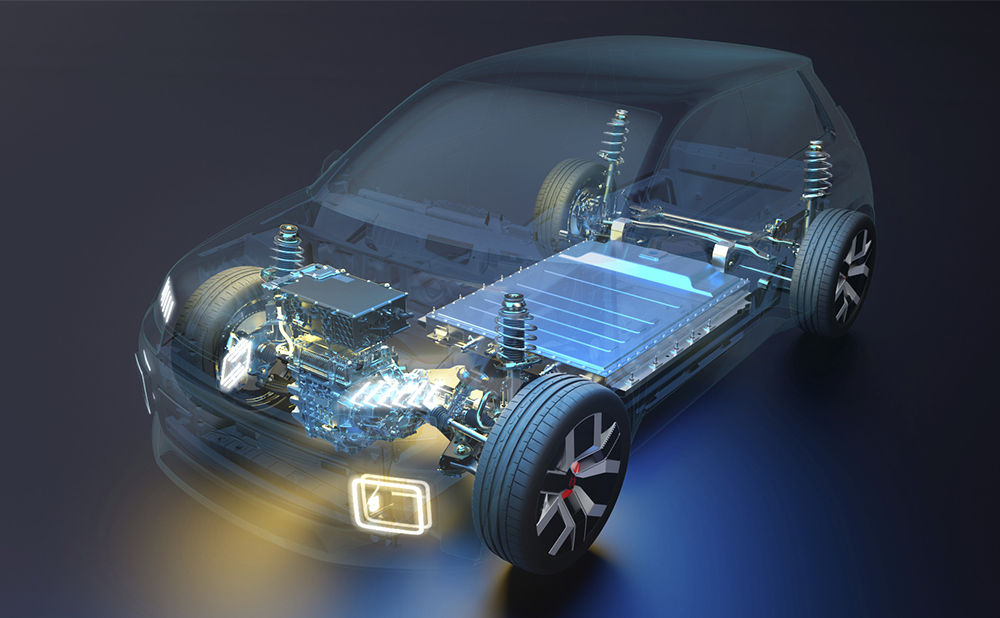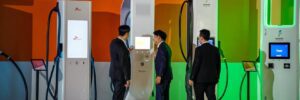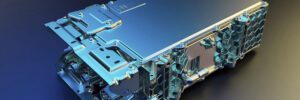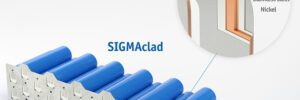At a time when most phones were capable of recording video, the original Apple iPhone wasn’t able to. The capability was added in future revisions, and today, the iPhone is one of the best-selling smartphones in history. The original Tesla Roadster came with an inelegant push-button shifter and a charging standard that was left to […]
Source: CleanTechnica Car Reviews RSS Feed
Electric Vehicle News
The Giga Press: Tesla’s Game-Changing Manufacturing Process Goes Mainstream
Half a dozen carmakers are adopting giga casting after Tesla to reduce costs and simplify manufacturing.
Source: Electric Vehicle News
Wallbox Embraces NACS Charging Connector Option
This year, the company will introduce in North America a 180 kW Supernova DC fast charger.
Source: Electric Vehicle News
Toyota will use AI to maximize future EV range
Artificial intelligence (AI) is becoming increasingly capable of performing complex tasks. Toyota plans to harness the power of AI to improve the car design process while optimizing vehicle aerodynamics, a critical factor in enhancing EV range.
The post Toyota will use AI to maximize future EV range appeared first on Electrek.
Source: Charge Forward
Chevy Bolt One Week Review — 4½ Stars
After a week with a used Chevy Bolt, what lessons have been learned? Would we buy it again? The answer is, absolutely!
Source: CleanTechnica Car Reviews RSS Feed
SK Signet opens Texas-based EV charger manufacturing facility
Korea-headquartered EV charger maker SK Signet has opened its first US EV charger manufacturing facility in Plano, Texas.
The company projects the plant’s production capacity of its range of chargers, from stand-alones to power cabinets supporting multiple dispensers, at more than 10,000 units per year. The facility will also host R&D, manufacture EV charger power modules, conduct charger testing with automakers, and develop EV charging software and firmware.
SK Signet’s fastest V2 charger, which is slated to begin production at the Texas facility later this year, provides a maximum output of 400 kW.
“The company’s new state-of-the-art facility will not only create new manufacturing jobs for Texans, but will advance critical EV infrastructure for our state and the nation,” said Texas Governor Greg Abbott, who recently signed a $200-per-year tax on EVs into law.
Source: SK Signet
Source: Electric Vehicles Magazine
Renault to introduce bidirectional-capable EV, charger and V2G platform
The Ford F-150 Lightning’s bidirectional charging feature is proving to be a surprise hit with buyers, and Hyundai/Kia has added bidirectional capability to its new models.
The latest automaker to go bi is Renault, which has announced that the upcoming R5 will be its first car to come with a bidirectional on-board charger. Mobilize, the Renault Group’s e-mobility brand, will also introduce the Mobilize Powerbox, a bidirectional charging station with power levels ranging from 7 kW to 22 kW; and the Mobilize V2G service, which allows drivers to put charging on hold during peak hours, to release energy to their homes when electricity is expensive, and to send it to the grid when demand is high.
“The architecture integrates natively reversible electrotechnical components and electrical-current management software, which will provide ongoing access to the Mobilize V2G service while preserving battery capacity,” says Renault.
“Thanks to Mobilize V2G, cars become an energy reserve,” says Corinne Frasson, Director of Energy Services at Mobilize. “All drivers have to do is regularly connect their vehicle to the Powerbox to optimize their electricity bill and cut carbon from their mobility. On average, the cost of charging is cut by half.”

The Mobilize V2G service includes an electricity contract provided by technology partner The Mobility House, which guarantees carbon-neutral electricity and serves to monetize energy sent back to the grid. The Mobility House’s platform aggregates the battery storage of participating vehicles and trades the capacity on the wholesale energy markets.
Each EV driver can decide how much battery capacity they want to provide via the app. They plug in their vehicle, specify their planned departure time and desired battery charge level, and the rest is taken care of automatically by The Mobility House’s technology.
“We are already using this technology to facilitate smart charging programs in the US in bidirectional projects from Oakland, California to New York City,” said The Mobility House CEO Robert Hienz.
Sources: Renault, The Mobility House
Source: Electric Vehicles Magazine
BYD Dolphin Launches In Europe Starting At €29,990
Chinese automaker BYD has recently announced pricing for its ID.3 competitor. It’ll start at €29,990 or £25,800 in the UK.
Source: Electric Vehicle News
CleanTechnica Tested: The EcoFlow DELTA 2 Max Solar Generator
EcoFlow seems to be on ‘a can’t stop, won’t stop’ mission to transform not only the world of portable solar generators, but is also starting to develop a host of appliances that take advantage of these portable power sources. Following on the heels of a successful lineup of portable power stations and solar panels, EcoFlow […]
Source: CleanTechnica Car Reviews RSS Feed
Li-ion battery pack connector plates with high thermal and electrical conductivity that are easily welded (Whitepaper)
Increasing demand for high power and high-capacity cells are major growth factors for the Li-Ion cylindrical battery market. As such, the demand for battery packs with higher energy output is also growing in sectors such as electric vehicles, industrial power tools, energy storage, consumer electronics, aerospace, defense, and others.
These packs have a need for efficient, dependable, and cost-effective ways to electrically connect the cells to maximize performance, optimize safety, and add value to the end application for the customer. In a typical battery pack module, the cells are organized in an array and then welded together in series and parallel to achieve the desired pack output. The selection of the metal used for this “connection” is not only critical for the overall performance and safety of the battery pack, but also for the efficient manufacturability of the pack.
This simple part of a battery pack assembly process is often overlooked. Manufacturers do not realize how they can save production costs and build higher performance into their packs, by making an informed decision on the best material to use. Engineered Materials Solutions designed such a material using our innovative cladding technology that is highly conductive to provide greater thermal and electrical performance while being easily weldable. For detailed information on this novel connector plate material for Li-Ion battery pack assemblies, please click the button below to access the free white paper.
Source: Electric Vehicles Magazine




